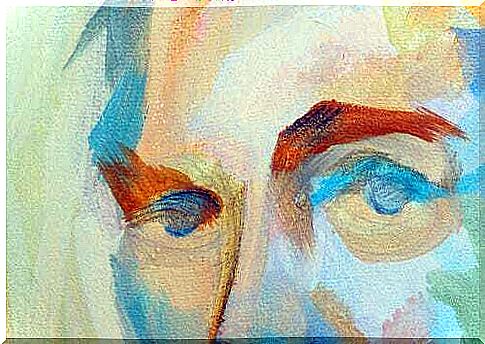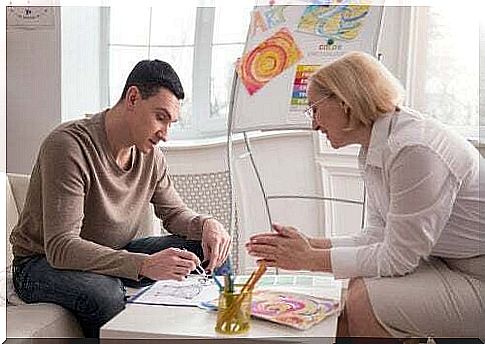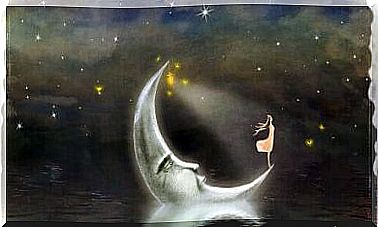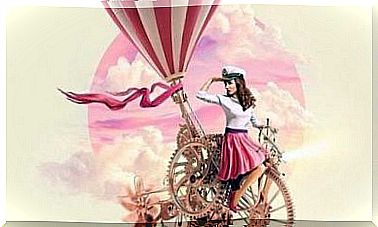Art Therapy For The Treatment Of Psychosis

Science has shown the benefits of art therapy for the treatment of psychosis. This path contributes to the strengthening of various functions, improves the sense of competence and self-esteem. But not only that: it also allows to contain psychotic anxiety and is a vehicle towards the formation of interpersonal relationships. There is no doubt: art therapy is an effective psychotherapeutic intervention in the treatment of psychosis.
But what is psychosis? It is defined as “a severe mental disorder, with or without organic damage, characterized by the loss of contact with reality that prevents normal social functioning”. Since it is a very complicated disorder, there have been many proposals for treatments and therapies. Specifically, art therapy is oriented towards the use of art for self expression and reflection, in the presence of a qualified art therapist.
Psychotherapist Katherine Killick argues that art helps the psychotic patient to project his ego outward until he is able to relate to the therapist’s mind. The therapy somehow tries to offer the patient the notions of time and social relationships, otherwise absent in his mind.
Killick explains that one of the tasks of the art therapist is to develop mediation paths between concrete and symbolic thinking. In addition to this, art therapy is used for the treatment of psychosis to address the limits of the ego and the formation of symbols.
Interpersonal relationships in art therapy for the treatment of psychosis
Dr. Killick has identified three areas of communication within the relationship established through art therapy. These are also useful when working with people with schizophrenia.
We refer to interpersonal, intermediate and intrapersonal communication. These three dimensions are interrelated and exert a continuous influence on each other.
The intrapersonal area
According to Reyes, it’s the area where the potential for image creation develops. The therapist maintains this relationship with the patient, who develops a unique interaction with the art materials ; this intervenes on the formation of symbols.
The intermediate area
In this area a play space is created where the person can experiment with objects in a symbolic activity.
The interpersonal area
This area includes the part of the relationship between the patient and the therapist that includes the images.
The expression of creativity in psychosis
Creating something new means doing, making means producing and producing has – not from a utilitarian but a psychosocial perspective – a great social, affective and cognitive value for the subject involved.
The word “create” comes from the Latin create , which means that a thing begins to exist where it did not exist before. This word is also etymologically associated with growth.
The importance of creativity in the treatment of psychosis is related depends on a different perspective towards mental illness. While this is a serious illness that causes significant cognitive, affective, emotional and social decline, it must also be recognized that all psychotic people have potential.
This can be promoted and developed by giving another place, another social role to the individual within the community.
The benefits of art therapy for the treatment of psychosis
Psychosis is mainly treated through individual and drug psychotherapy. However, many times this approach does not guarantee the desired results if it is not accompanied by an interdisciplinary treatment. This is why art therapy can be very useful in treating patients with severe disorders such as psychosis.
Art therapy is part of the support psychotherapy group. Supportive therapy is a “long-term therapy aimed at maximizing the patient’s strengths and restoring his psychological balance by trying to minimize dependence on the therapist”.

Self-expression and reflection
Art is a plastic and flexible language, a means of communication between the patient and his inner world. In psychosis, the relationship with the outside world is altered. This is why art can serve the subject to communicate feelings, fantasies and fears. On the other hand, it also serves the therapist to get in tune with some experiences lived by the patient.
Effects of art therapy for the treatment of psychosis
According to María Aranguren and Tania Elizabeth León, the effects of art on a psychotherapeutic level are:
- Connect subjective experience with external reality.
- Promotes order, harmony, rhythm and proportion.
- It generates catharsis and promotes emotional clarification, allowing to shape and integrate contradictory feelings between them.
- It guides and gives meaning to personal reality and the world through the use of symbols and metaphors.
- Stimulate images and creative potential.
Art therapy promotes the development of psychological capacities and states that can induce a psychic change in patients with psychosis. Interdisciplinary interventions of this type improve the lives of those affected by this disease, so it is worth taking them into account, at least as complementary treatments.








